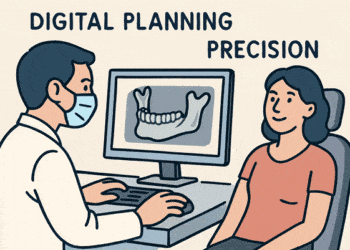Whiplash injuries are often underestimated because they may not cause immediate pain or visible damage. However, symptoms like neck stiffness, headaches, dizziness, or shoulder pain can show up hours or even days after a collision.
If you’ve recently been in a car crash and are starting to feel sore or uncomfortable, don’t ignore it—whiplash could be the cause. In such situations, car accident lawyers can help you understand your rights and determine whether you may be entitled to compensation.
Taking quick action can make all the difference in your physical recovery and your ability to build a strong legal case. Here’s what you should do if you think you’ve suffered a whiplash injury.
1. Seek Medical Attention Immediately
Even if you don’t feel severe pain right after the accident, whiplash symptoms can worsen over time. A doctor can diagnose the injury through a physical exam, imaging tests (like X-rays or MRIs), and a review of your symptoms.
Prompt medical care ensures you get proper treatment, such as pain management, physical therapy, or chiropractic care, while also creating an official record of your injury. This documentation is crucial if you later pursue a personal injury claim.
2. Follow Your Doctor’s Treatment Plan
Whiplash recovery varies depending on injury severity. Some people heal within weeks, while others experience chronic pain. Follow your doctor’s recommendations, which may include:
- Rest and activity modification
- Pain relievers or muscle relaxants
- Physical therapy exercises
- Heat or cold therapy
Skipping treatment can delay healing and hurt your legal case if insurers argue your injuries weren’t serious.
3. Document Everything Related to the Accident
Strong evidence supports your claim if you seek compensation. Keep records of:
- Medical reports (diagnoses, treatment plans, prescriptions)
- Photos of injuries (visible swelling, bruising, or mobility limitations)
- Accident details (police reports, witness statements, crash scene photos)
- Expenses (medical bills, lost wages, travel costs for treatment)
A well-documented case makes it harder for insurance companies to deny or undervalue your claim.
4. Avoid Giving Statements to Insurance Adjusters Without Legal Advice
Insurance companies may contact you soon after the accident, asking for a recorded statement. Be cautious—adjusters often look for ways to minimize payouts. Politely decline to give details until you’ve consulted a professional.
Instead, let your medical records and legal representative handle communications. This protects you from saying something that could be used against you later.
5. Know When to Consult a Legal Professional
If your whiplash injury leads to significant medical bills, lost income, or long-term pain, you may be entitled to compensation for:
- Medical expenses
- Lost wages and reduced earning capacity
- Pain and suffering
- Rehabilitation costs
An experienced attorney can assess your case, negotiate with insurers, and ensure you receive fair compensation.
6. Be Mindful of the Statute of Limitations
Every state has a deadline (statute of limitations) for filing injury claims—typically 1-3 years from the accident date. Missing this window means losing your right to seek compensation.
Starting the legal process early gives your attorney more time to gather evidence and build a strong case.
Taking the Right Steps Towards Recovery and Justice
Dealing with a potential whiplash injury after an accident can feel overwhelming, especially when symptoms develop slowly and interfere with your daily routine. But acting quickly—seeking medical care, documenting your experience, and understanding your legal options—can make a big difference in your recovery and financial situation.
With the right steps, you not only prioritize your health but also put yourself in the best position to hold the responsible party accountable.







